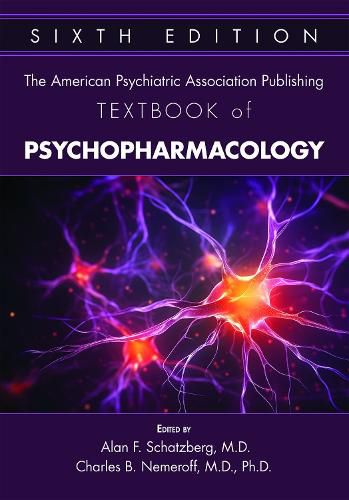Readings Newsletter
Become a Readings Member to make your shopping experience even easier.
Sign in or sign up for free!
You’re not far away from qualifying for FREE standard shipping within Australia
You’ve qualified for FREE standard shipping within Australia
The cart is loading…






More than 160 authors-including more than 75 new contributors-lent their expertise to this sixth edition of The American Psychiatric Association Publishing Textbook of Psychopharmacology. Featuring 12 all-new chapters and fully aligned with the revised DSM-5-TR classification, this two-volume text offers an unrivaled, in-depth look at the rapidly evolving field of neuropsychopharmacology.
The opening chapters provide a whirlwind tour of the multiple disciplines that undergird the chapters to come, with topics extending from the principles of molecular biology and genomics to the rudiments of neuroimaging and personalized medicine in psychiatry. The main body of the Textbook features an examination of the medication classes that form the basis of psychopharmacological treatment. For each drug within a class, data are reviewed on history and discovery, preclinical and clinical pharmacology, pharmacokinetic parameters, mechanism of action, indications and efficacy, side effects and toxicology, and drug-drug interactions. The Textbook's second volume focuses on psychopharmacological approaches to treatment of patients with major psychiatric disorders (e.g., mood and anxiety disorders, schizophrenia, substance use disorders) as well as patients in specific populations (e.g., adults with ADHD, pediatric patients). For each specific condition, patient population, or setting, chapters provide guidance on topics such as medication selection, combination and maintenance dosing regimens, side-effect monitoring and management, and optimization of treatment response. Closing this volume is an Appendix of Psychiatric Medications with key information on each of the agents covered in the Textbook, presented in a convenient tabular format.
Noteworthy additions to this textbook include chapters addressing the following topics:
* The potential roles of personalized medicine in psychiatry and of artificial intelligence and machine learning in psychopharmacology
$9.00 standard shipping within Australia
FREE standard shipping within Australia for orders over $100.00
Express & International shipping calculated at checkout
More than 160 authors-including more than 75 new contributors-lent their expertise to this sixth edition of The American Psychiatric Association Publishing Textbook of Psychopharmacology. Featuring 12 all-new chapters and fully aligned with the revised DSM-5-TR classification, this two-volume text offers an unrivaled, in-depth look at the rapidly evolving field of neuropsychopharmacology.
The opening chapters provide a whirlwind tour of the multiple disciplines that undergird the chapters to come, with topics extending from the principles of molecular biology and genomics to the rudiments of neuroimaging and personalized medicine in psychiatry. The main body of the Textbook features an examination of the medication classes that form the basis of psychopharmacological treatment. For each drug within a class, data are reviewed on history and discovery, preclinical and clinical pharmacology, pharmacokinetic parameters, mechanism of action, indications and efficacy, side effects and toxicology, and drug-drug interactions. The Textbook's second volume focuses on psychopharmacological approaches to treatment of patients with major psychiatric disorders (e.g., mood and anxiety disorders, schizophrenia, substance use disorders) as well as patients in specific populations (e.g., adults with ADHD, pediatric patients). For each specific condition, patient population, or setting, chapters provide guidance on topics such as medication selection, combination and maintenance dosing regimens, side-effect monitoring and management, and optimization of treatment response. Closing this volume is an Appendix of Psychiatric Medications with key information on each of the agents covered in the Textbook, presented in a convenient tabular format.
Noteworthy additions to this textbook include chapters addressing the following topics:
* The potential roles of personalized medicine in psychiatry and of artificial intelligence and machine learning in psychopharmacology